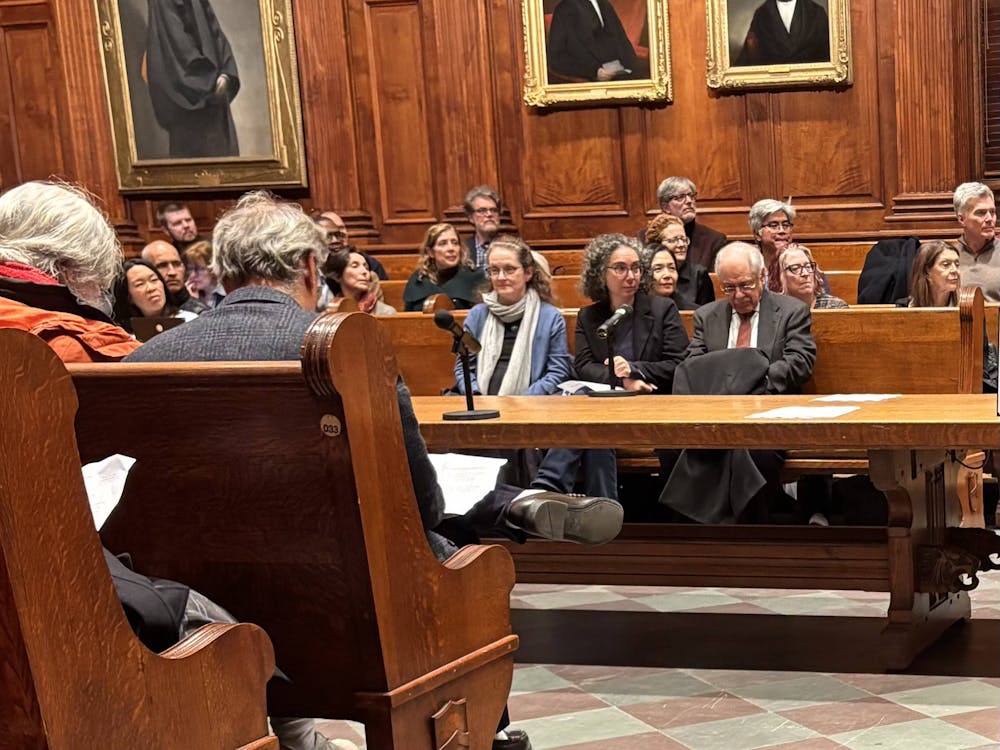The 17-member search committee, which will be staffed by University Vice President and Secretary Robert Durkee ’69, will consist of nine trustees, four faculty members, two undergraduate students, a staff member and a graduate student. The specific members of the committee have not yet been announced publicly, though Durkee said the trustee delegation has been finalized.
Chair of the University Board of Trustees Kathryn Hall ’80 said information about the search committee will not be available until the group meets for the first time by the third week of October. At that time, the names of the members of the committee will be made public.
USG president Bruce Easop ’13 said there will be an open application process for selecting and interviewing the two undergraduate representatives to serve on the committee. The application will be sent out tomorrow and seniors will be favored in the selection process.
Unlike when former USG president PJ Kim ’01 served as one of the undergraduate representatives on the search committee that led to Tilghman’s selection in 2001, Easop said he will not pursue the position in order to offer other students an opportunity to sit on the committee.
The USG will conduct the interview process and make nominations to the board for approval in October. The decision to have an open application comes as part of a USG initiative to foster better campus representation, rather than allowing the USG to handle the nomination internally. The previous presidential search committee in 2001 held a similar application process for the undergraduate positions.
“The decision to hold an open application process for these undergraduate slots was a decision upheld by all of the USG,” Easop said. “This is a fantastic opportunity to impact the University in the decades to come.”
Tilghman said on Saturday that, while she was willing to offer advice on the search to the committee, she “will play absolutely no role” in the committee’s ultimate selection and that she is not involved in the selection of the committee’s composition.
Tilghman’s retirement announcement comes at a time of transition for other Ivy League leadership. Yale President Richard Levin announced last month that he would leave after 20 years at the helm, and last spring former Dartmouth president Jim Yong Kim left in order to take a job leading the World Bank. Last spring, former Wilson School dean Christina Paxson departed Princeton to lead Brown.
Currently, five of the eight Ivy League universities are led by women. The Association of American Universities, a nonprofit which Princeton co-founded in 1900, composed of prominent research universities was chaired by Tilghman from October 2008 to October 2009.
“Shirley Tilghman was a very effective chair of AAU; she was a very vocal and strong advocate for research universities,” AAU Vice President for Public Affairs Barry Toiv said. “Her absence after more than a decade and Rick Levin’s after 20 years will be felt. There was a lot of stability there that’s leaving.”
This will be the first presidential search committee assembled under Hall, who became chair of the board last year. While other search committees have been assembled to fill leadership positions in the Wilson School, none have been dedicated to finding such a critical replacement as University president.
The search for the successor to former University president Harold Shapiro GS ’64 called upon a similar search committee of 18 University members from a range of constituencies, according to Paul Wythes ’55, a former trustee who was vice chairman of the search committee over a decade ago.

The search that chose Shapiro began in 2000 and concluded in May 2001, when the trustees approved Tilghman’s selection. During that search, the University did not hire a search firm but delegated the task of compiling a list of candidates to members of the committee. Only the 18 members of the committee had the key to the prospective list of candidates kept in Nassau Hall, Wythes said. The final step was extensively interviewing those five or six candidates that became finalists. The search for Tilghman took six months.
Additionally, higher education recruiting firms that headhunt leadership talent on behalf of universities searching for their next president or other leadership posts have been used by the University in the past. The search in 2001 was not outsourced, according to Wythes, but it is unclear whether the University will utilize one of these companies during this search.
John Isaacson, an executive recruiter who is involved in the search for the new Dartmouth president acknowledged that Princeton had been a client in the past. He said he would not be involved with this search in any capacity.
A study published by the American Council on Education last March offered an empirical look at University presidencies. The study found that the average president in the United States serves for seven years, is 61 years old, is white and married and holds an advanced degree in education. Twenty percent of presidents arrive at their post from outside of academia, a trend that has become more popular since 1986 when the report first began publishing on an annual basis.







